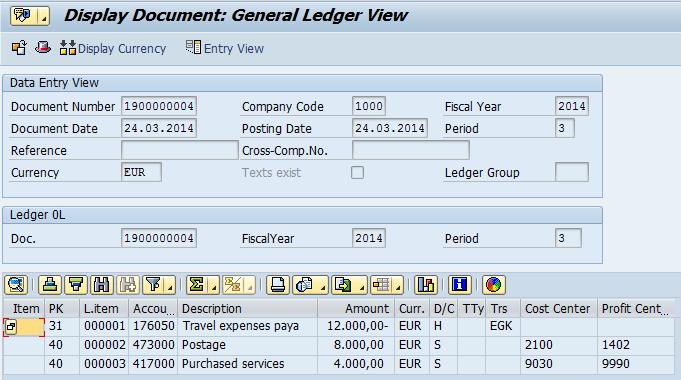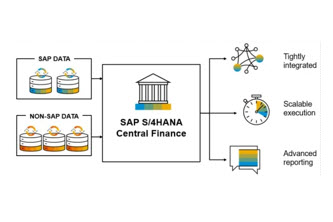How to Launch Your Career as an IT/Business Analyst
by Michael Management
 Are you looking to start a career as an IT/business analyst? That can be a challenging proposition, especially if you’re coming into this career segment with little or no experience.
Are you looking to start a career as an IT/business analyst? That can be a challenging proposition, especially if you’re coming into this career segment with little or no experience.
However, the good news is that anyone with analytical skills can successfully grow in their careers to become a successful IT/business analyst. The first step is to launch your career itself.
With that in mind, here're some steps you should take to get started in your career as an IT/business analyst.
1. Understand Common Business Frameworks
Business frameworks are different methods of looking at the continual process of running and growing a company and performing business analysis. There are countless business frameworks in the world, many of which are proprietary to certain companies and kept secret.
However, there are dozens (maybe hundreds) of published frameworks with case studies that companies are free to adopt. Two of the most common are Agile and Lean.
Agile
The Agile framework emphasizes quick and small iterations of product advancement that often have the goal of satisfying a customer need (as opposed to an internal company need). Specifically, Agile deals with software, making it a commonly-employed framework at software development companies, software-as-a-service organizations, and more. In fact, because software has become such a ubiquitous part of daily work for so many companies, you may even find non-software companies borrowing ideals from Agile framework.
This is why it’s so important to understand Agile. Even though it originally started in the world of software, it’s found in many companies throughout the world today. Perhaps the most commonly used part of the Agile framework is the concept of scrum. A scrum is a lightning-fast meetup among colleagues to discuss a shortlist of issues, determine possible actions, and assign those actions. For Agile, this can mean having one quick meeting to solve one single problem. The time investment could be a matter of minutes as opposed to having a full staff meeting, which could take more than an hour.
The main takeaway from Agile is that it's fast — much faster than many other business frameworks. This is the framework you will usually find in a business that sells in an industry that changes often.
Lean
The Lean framework is the process of optimizing the resources, effort, people, and energy in an organization to ensure the best possible outcome with minimal waste. You pursue these processes according to two guidelines.
- Continuous improvement
- Respect for people
The end result of Lean methodology is to somehow deliver value to the company’s current customer roster. That value could be a link in your website’s navigation or a total overhaul of a user interface.
Whatever it is, it has to provide more value to the customer and, as a result, make the product more valuable.
2. Understand Leadership Styles
As an IT/business analyst, you will almost certainly be working closely with a variety of different departments or team members who all look at things differently and have different priorities. Understanding these leaders, how they think, and how they interact is a major component of success as an analyst.
Often, people may think that this means you have to learn how to “suck up” to different bosses in order to get on their “good side.” However, the truth is much simpler and less subjective. Different people work in different ways, and this is especially true for department managers and company executives who have to spend a lot of time on a lot of different tasks. As a result, they need to receive information in the way that makes sense to them so that they can begin the process of delegating a task or solving a problem.
Someone who may be “blunt” most likely values direct information. Someone who likes to chit-chat may appreciate you asking how they’re doing that day before jumping into the subject at hand. To help understand leadership styles, you can learn more about how they’re classified in different ways. DiSC is one of the most popular programs, though there are certainly others that can help you understand and communicate with different leadership styles.
3. Practice Time Management
Perhaps one of the most overlooked areas of work is an individual’s time management. Time management refers to someone’s ability to prioritize tasks, understand the information available, and execute an action in a timely fashion. In addition, many may consider time management to refer to someone’s ability to execute the correct action in the time allotted as well. After all, many companies (and department leaders) would rather have the correct action than a fast one. You can practice time management by setting a schedule for yourself in terms of work to be done in a given day. Then, at the end of the day, you can evaluate how well you stuck to that schedule.
Did you deviate from your planned tasks at any point? If so, why? If another task came up while you were trying to complete another one, did you pivot to the new task? Could the new task have waited until you completed the first one? These are all questions that can help you reflect on your skills of time management, though they only scratch the surface of time management as a whole. This skill requires constant diligence to truly master, and even once you master it, you may discover other areas of opportunity for you to continually improve.
4. Acquire the Proper Technical Skills
Naturally, you’ll need to learn and retain information on a suite of technical applications to help you succeed in your career. This includes the Microsoft Office suite as the gold standard of corporate applications. It can quickly grow to encompass other products as well, including Cisco, Google, and more, depending on where you may begin your career.
There’s also the matter of networking and information systems know-how since you’ll primarily be working in that area for much of your career as an IT/business analyst.
5. Apply!
Now that you have the informational and technical background required to become an IT/business analyst, it’s time to apply for jobs! Do a job search popular boards like Indeed or Monster to find an entry-level position that’ll let you get your foot in the door at a company where you can grow.
Once you nail the interview and get the job offer, you’ve officially launched your career as an IT/business analyst!
Learn What You Need to Launch Your Career
Are you ready to launch your career as an IT business analyst? We have the perfect place for you to start. Click here to discover our IT business analyst curriculum and start learning today!
by Michael Management
More Blogs by Michael Management

Unlock Financial Precision: The Critical Role of...
Mastering Document Splitting in SAP Central Finance: Essential Ins...

Unlocking Success: The Strategic Imperative of Group...
Why is Group Reporting Critical for SAP Central Finance? Masterin...

Kickstart Your Career: Mastering SAP Inventory...
SAP inventory management is an in-demand skill set from large companie...
Related Blogs

10 Stress Reduction Tips To Try When You Are Feeling...
Michael Management has recently introduced a range of personal develop...

The 7 Habits of a Highly Effective SAP Professional
Do you have what it takes to become a highly effective SAP professiona...

Top SAP Learning Paths
Becoming an SAP professional can lead to some of the most rewarding careers for...
.png)

